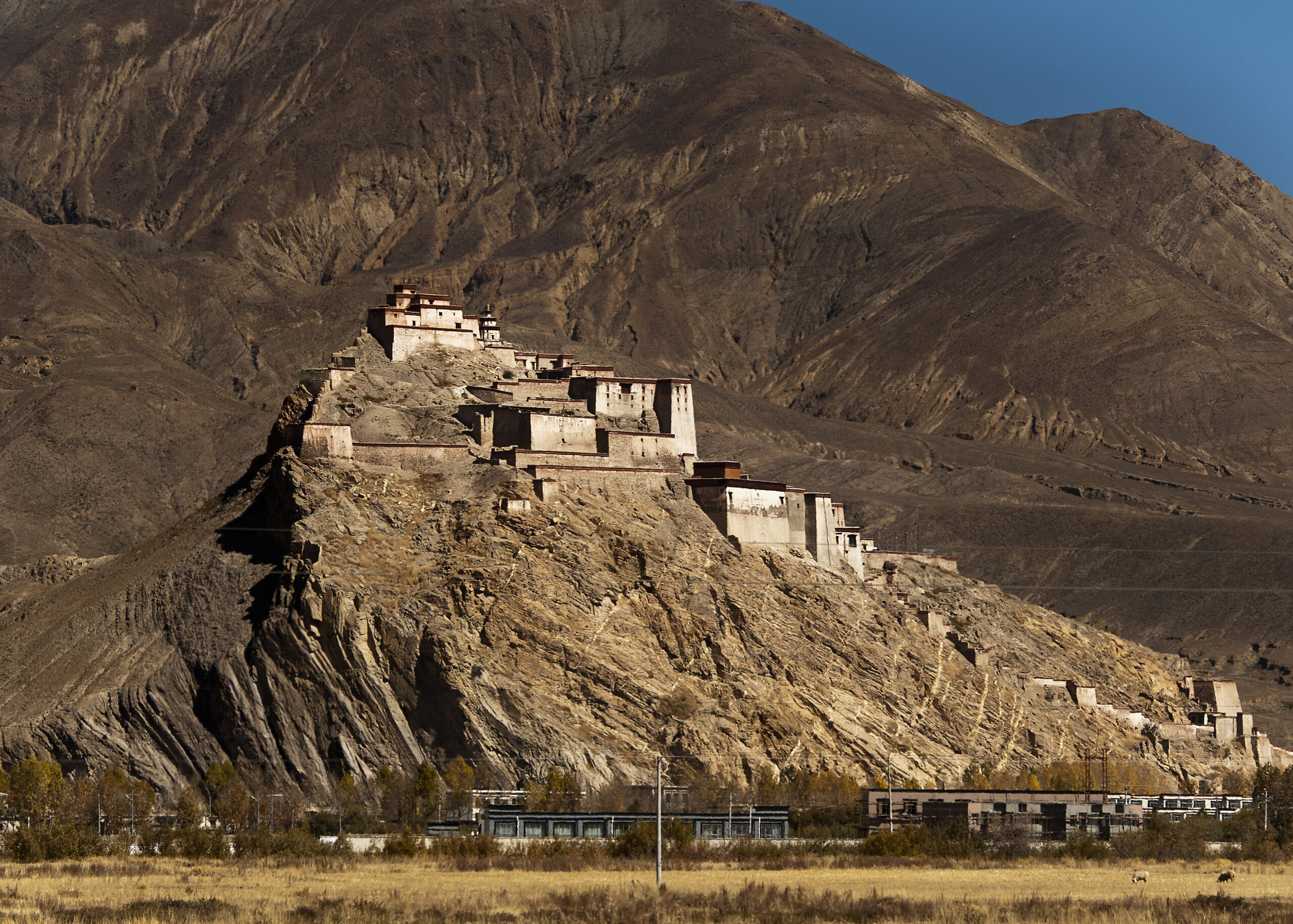Gyantse Dzong, also known as Gyantse Fortress or Gyantse Castle, is a historic fortress located in the town of Gyantse, in the Tibet Autonomous Region of China. Perched atop a hill overlooking the fertile plains of the Nyang Chu Valley, Gyantse Dzong is a symbol of the region’s rich cultural heritage and strategic importance throughout Tibet’s history.
The fortress dates back to the 14th century and was originally constructed as a defensive stronghold to protect the town of Gyantse and its inhabitants from invading forces. Over the centuries, Gyantse Dzong played a crucial role in safeguarding the region’s sovereignty and serving as a bastion of Tibetan resistance against external threats.
The architecture of Gyantse Dzong is a testament to the ingenuity and craftsmanship of Tibetan builders, with its massive stone walls, towering watchtowers, and fortified gates that reflect the defensive features of traditional Tibetan fortresses. The fortress is built in a strategic location, with commanding views of the surrounding landscape, making it an ideal vantage point for monitoring enemy movements and coordinating defenses.
Within the walls of Gyantse Dzong are a series of courtyards, halls, and chambers that served various administrative, military, and religious functions. The fortress housed the residence of the regional governor, government offices, armories, and barracks for soldiers, as well as temples, prayer halls, and monk’s quarters for Buddhist monks who resided within the fortress.
One of the most notable features of Gyantse Dzong is its central assembly hall, known as the Tse Lhakhang, which served as the main religious and ceremonial center of the fortress. The hall is adorned with intricate murals, thangka paintings, and statues of Buddhist deities, creating a serene and spiritual ambiance that reflects the region’s deep-rooted Buddhist traditions.
Throughout its history, Gyantse Dzong witnessed numerous conflicts, battles, and power struggles between rival factions, as well as periods of peace and prosperity under benevolent rulers who governed the region with wisdom and compassion. The fortress played a central role in shaping the political, cultural, and religious life of Tibet and remains a potent symbol of Tibetan resistance and resilience against external aggression.
Today, Gyantse Dzong stands as a testament to Tibet’s storied past and a symbol of the region’s enduring cultural heritage. The fortress has been meticulously preserved and restored over the years and is now open to visitors, offering insights into Tibet’s rich history, architecture, and heritage.
Visitors to Gyantse Dzong can explore the fortress’s ancient walls, climb its watchtowers, and marvel at its ornate decorations and architectural details. They can also learn about the fortress’s history and significance through guided tours, exhibitions, and cultural performances that showcase Tibet’s unique traditions and customs.
In conclusion, Gyantse Dzong is a remarkable testament to Tibet’s rich cultural heritage, architectural prowess, and strategic significance. As one of the most important fortresses in Tibet, it stands as a symbol of the region’s enduring resilience and cultural identity, offering visitors a glimpse into the history, architecture, and traditions of this ancient land.

